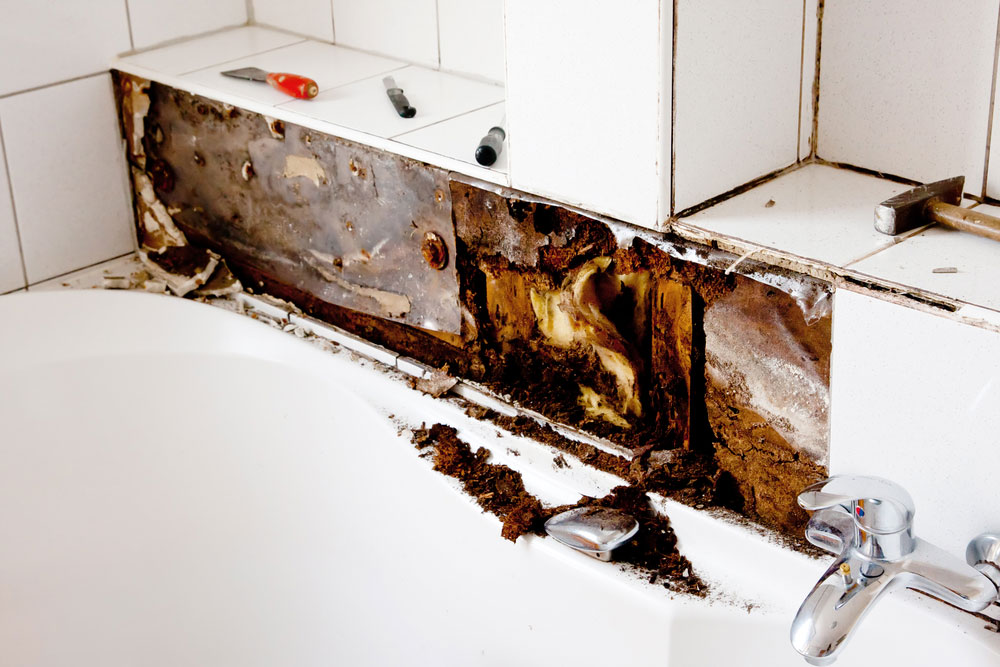What're your thoughts on Common Causes of Water Damage in a Bathroom?

The shower room is extremely prone for moist build-up and also potential water damages due to the regular use of water in it. This post offers basic examination techniques to assist identifying water damage threats.
The frequent use of water in the shower room makes it extremely susceptible for damp buildup and prospective water damages. By evaluating it routinely, you can minimize water relevant damages.
The complying with collection of inspections is simple to execute and ought to be done when in every 3 months in order to keep your bathroom in good shape as well as to avoid prospective water problems triggered by the bath tub, the shower, pipeline joints and also plumbing, sinks, closets, and the toilet
Do not neglect carrying out these assessments and be thorough while performing them. Keep in mind that these simple inspections can save you a lot of cash by supplying early indicators for water damage
Sinks as well as Cabinets
Sinks as well as cupboards are subjected to wetness and humidity daily and also are usually forgotten. Evaluate consistently under the sink and also on the kitchen counter over it. Fix any type of drip in the catch as it may suggest drain troubles. Check out the sink, slow-moving draining pipelines may suggest a blocked drainpipe. Change sink seals if they are split or loosened.
Tub and Shower
The shower and bath tub call for unique interest and upkeep. Examine the tiles and change if split. Ensure that there is no missing cement in between the ceramic tiles. Examine and change broken caulking at joints where the walls fulfill the flooring or the bathtub. Obstructed drains pipes as well as pipes troubles will avoid the bath tub from drying out as well as may show major problems under the tub. Consult with a specialist promptly to prevent architectural damages. Take note of stainings or soft areas around the bath tub walls as they may show an internal leakage.
Plumbing
Signs for water damage are hard to find because the majority of pipes are mounted inside the wall surfaces.
Pay special interest to flooring and also walls dampness and discolorations as they may show an undetectable plumbing trouble. Inspect dampness levels in adjacent rooms too.
The Toilet
The commode is a susceptible water joint. Check the water lines as well as search for leaks around the commode seat, in the hose pipe, and also under the water storage tank. If you identify any type of indicators of moisture on the flooring around the toilet, check for leakages in the toilet rim as well as tank seals.
Know that hanging commode bowl antiperspirants increases the possibilities for obstructions.
Water Damage Signs In The Bathroom To Avoid Cleanup
Musty smell
This is one of the easiest signs to catch because musty smells are so odorous. The damp, earthy, moldy smell should be a big red flag. The smell will develop when moisture gets trapped in surfaces, and begins to facilitate mold growth. Leaking pipes under cabinets, inside walls, and behind shower fixtures will cause moisture to stay trapped and not dry, which will lead to mold growth and spread. As soon as you notice any musty smells in your bathroom, have it checked for hidden water damage and cleanup signs.
Visible mold
If the smell isn’t there to give it away, sometimes you will actually see mold growth. Finding mold in your bathroom is a serious problem, because mold is very harmful to your health. By the time mold growth is visible, it also means that water damage has already occurred and been present for some time. The only way the mold problem can be resolved is to find the source of the moisture and get it stopped. To safely and adequately remove mold, you need to have professionals handle the remediation. Do not waste any time in getting mold problems addressed, fixed, and sanitized so that you can protect you and your family from the many respiratory symptoms caused by mold exposure.
Damaged floors
Bathroom floors should be able to withstand some exposure to water while still remaining in good condition. However, when excess exposure or water leaks occur, they will begin to damage even the most water-resistant flooring. If you notice any cracking, bubbling, staining, or warping on your bathroom floors, there is probably a water leak somewhere causing the distortion. If you notice areas of the floor have become softer, or even have a spongy feeling, there is probably damage to the subfloor. Subflooring is typically made up of plywood. When plywood is exposed to water or moisture, it will absorb it. Once it has become saturated, the weight of the excess water will cause the wood to swell and soften. Check the floors in your bathroom frequently to catch any of these sings before they lead to damaged subflooring.
Changes on walls
When water leaks behind walls, it will cause changes in the drywall. Peeling plaster, blistering paint, and soggy wallpaper are all good indicators that excess water is building up behind the wall. Water leaking behind drywall will cause it to swell and be soft to the tough. If you start to notice gaps along the trim of your walls, or where tile meets the wall, it could also be a strong indicator that there is a leak behind the wall. Any changes, distortion, or damage on the walls should be evaluated as soon as you notice it to prevent further water damage and cleanup.

I discovered that blog post on Looking for Signs of Water Damage in the Bathroom while doing a search on the search engines. Enjoyed our piece of writing? Please share it. Let another person locate it. Thank you so much for taking the time to read it.
Estimate Free